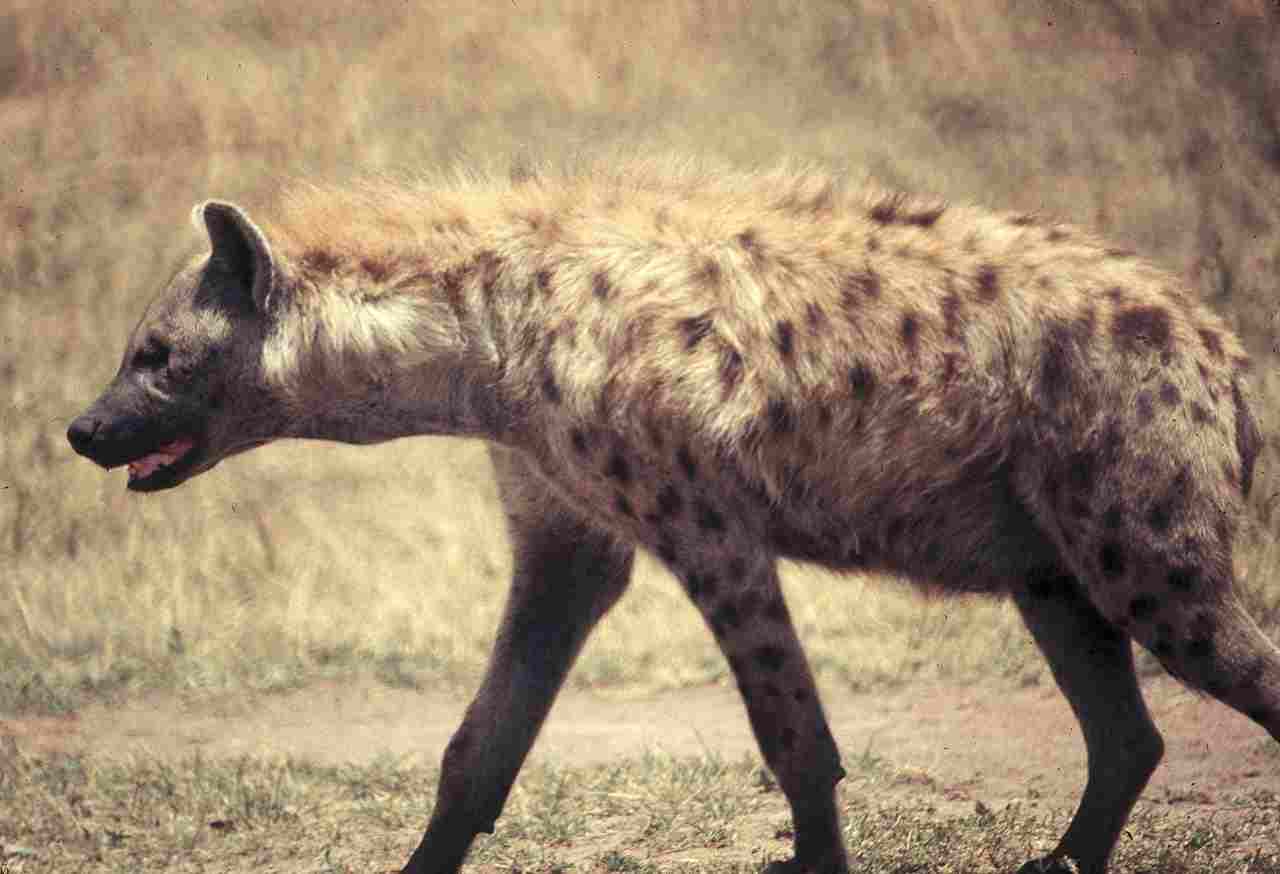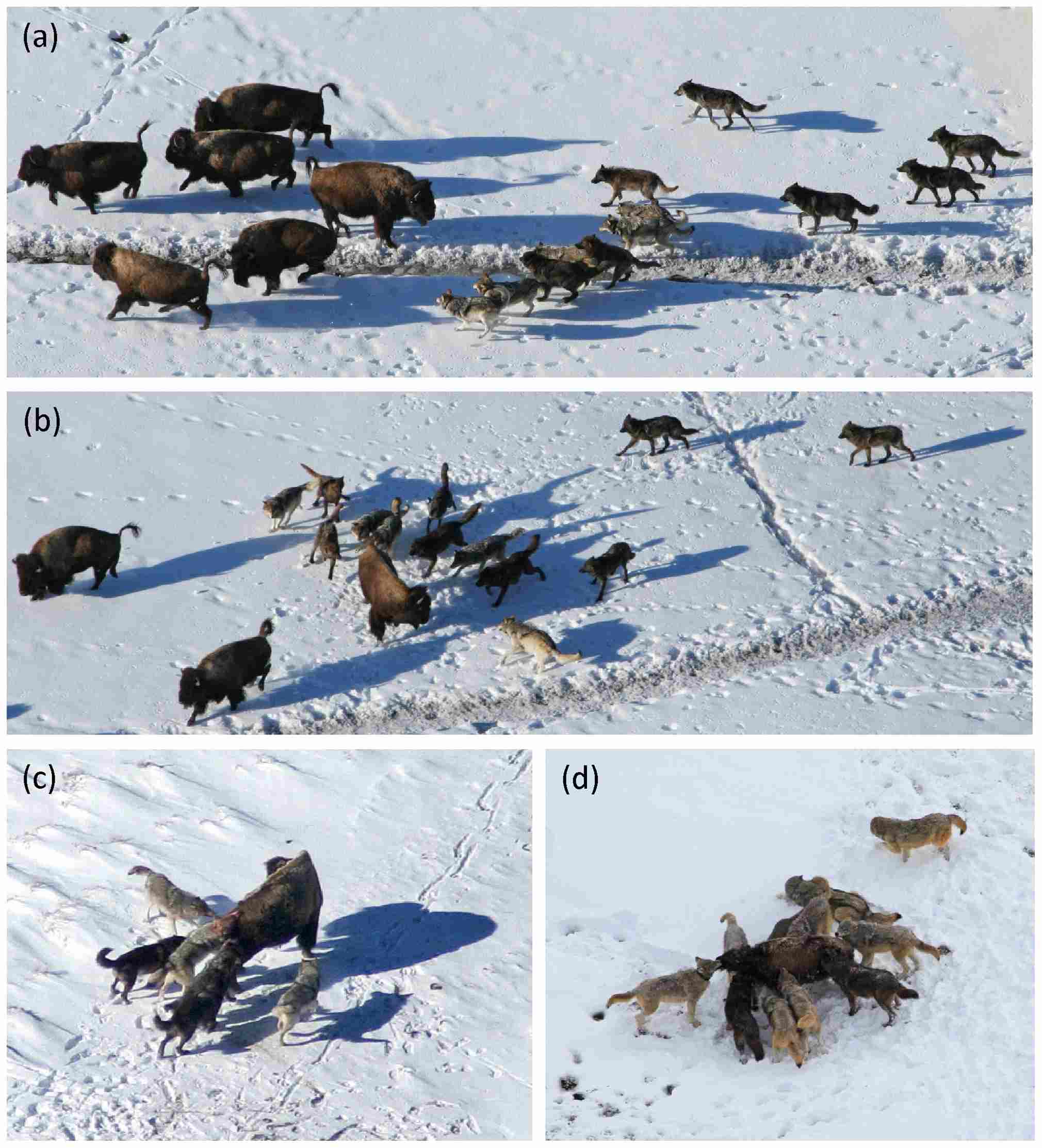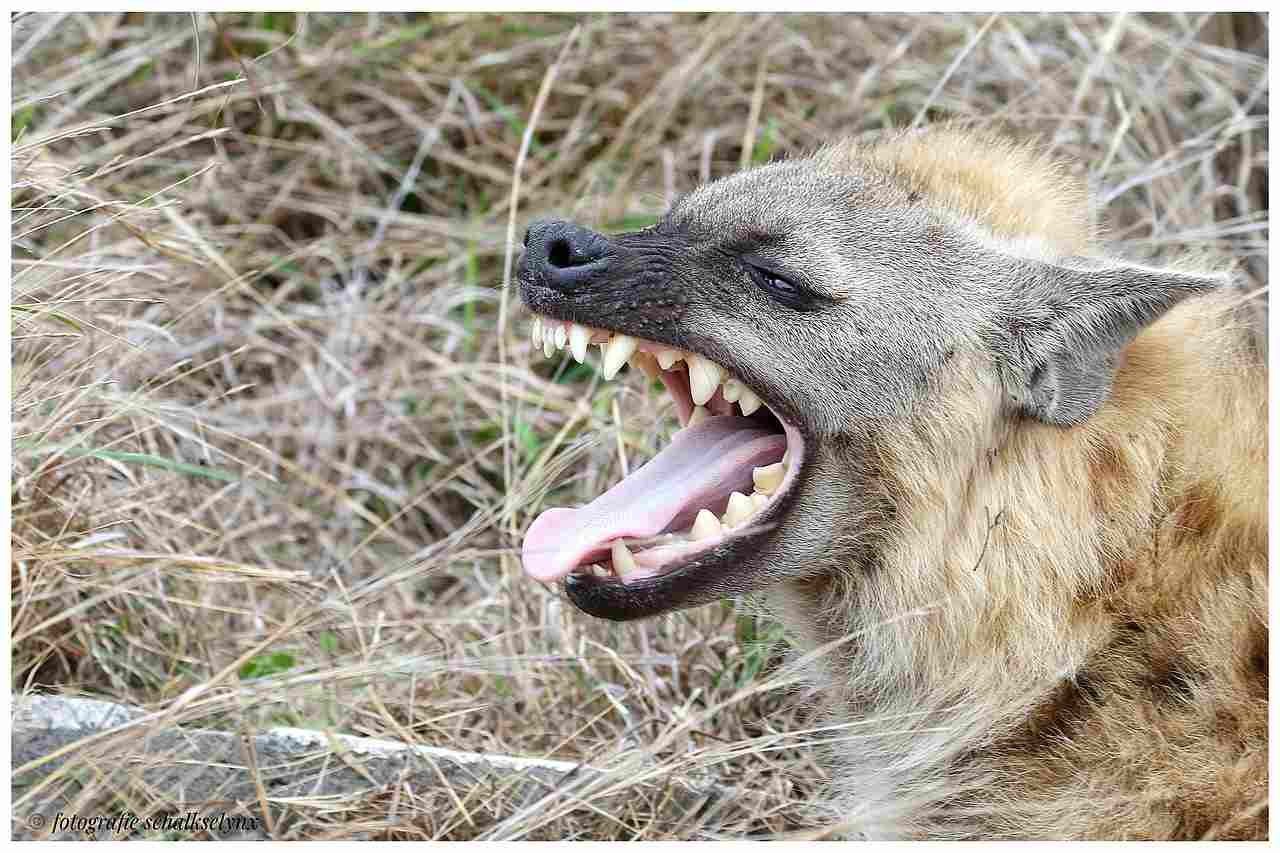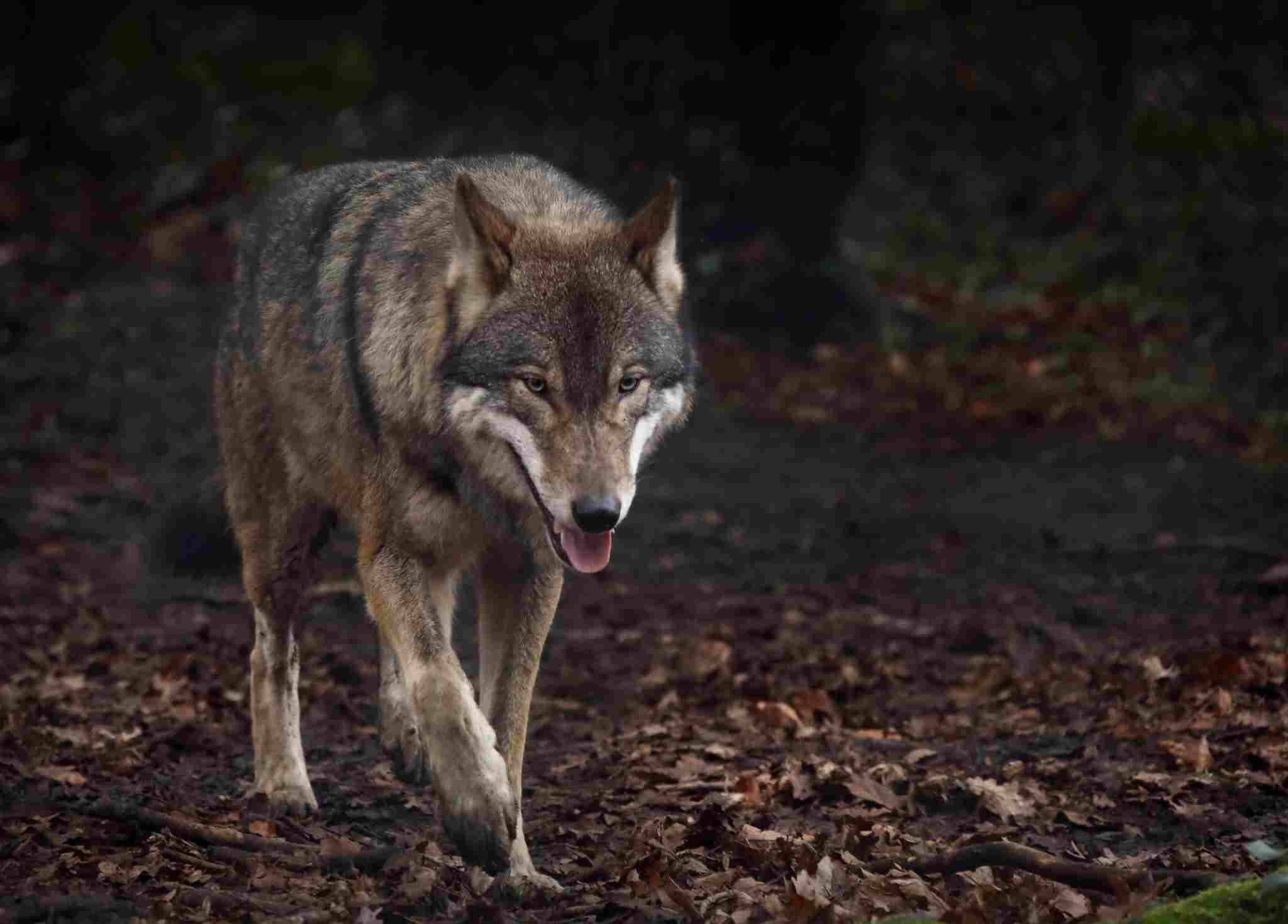Wolf Vs Hyena Size, Weight, Ecological Comparison
A hyena has the advantage over a wolf in terms of weight, strength, speed, and bite force, although there are various other factors that can be used to compare these animals.
In this article, we will delve into the taxonomy, appearance, size, weight, speed and agility, overall physical capacity, habitat, lifespan, behavior, reproduction, danger posed to humans, and conservation status of both wolves and hyenas.
Key Outcomes
*Biological Comparison
Wolf and hyena may seem similar in some ways, but they are not biologically related. Wolves belong to the genus Canis, while hyenas belong to the genus Hyaena. Despite their differences, a biological comparison between these animals can still be made.
When comparing the two, it’s important to consider their physical characteristics, behaviors, and ecological roles. Wolves are known for their pack mentality, hunting in groups and displaying strong social bonds. On the other hand, hyenas are highly adaptable scavengers, often associated with their distinctive laughing vocalizations.
*Size and Weight Comparison
When comparing the size and weight of wolves and hyenas, it is clear that there are significant differences between the two. Wolves are generally larger in size, with an average length of 4.5 to 6.5 feet and a height of 2.5 to 3.5 feet at the shoulder. They can weigh anywhere from 70 to 150 pounds, depending on the subspecies.
On the other hand, hyenas are slightly smaller, measuring around 3.6 to 5.9 feet in length and 2.3 to 3.3 feet in height. They typically weigh between 90 and 190 pounds. These differences in size and weight contribute to variations in their physical capabilities and hunting strategies.*Physical Capability Comparison
Generally, hyenas are stronger than wolves, as well as heavier and slightly larger.
The physical capability comparison between the hyena and the wolf reveals interesting differences. While the hyena is known for its strength, attributed to its weight and build, the wolf possesses its own unique physical capabilities. These include its agility, speed, and bite force.
1). Taxonomy
The taxonomy of wolves and hyenas reveals interesting differences between the two species. Wolves belong to the genus Canis and the species lupus, while hyenas belong to the genus Crocuta and the species crocuta.
In terms of their classification, wolves and hyenas are both mammals and belong to the order Carnivora. However, they are classified into different families. Wolves are part of the Canidae family, which includes other canids such as foxes and domestic dogs. On the other hand, hyenas are part of the Hyaenidae family, which includes only hyenas.
When comparing the two animals, it is clear that their taxonomy sets them apart. Wolves are more closely related to other canids, while hyenas have a distinct taxonomic classification within the Carnivora order. This difference in taxonomy reflects the unique evolutionary paths that wolves and hyenas have taken.
2). Appearance
The appearance of wolves and hyenas showcases distinct characteristics that set them apart. Starting with their coats, wolves have a thick, dense fur that helps them withstand harsh weather conditions. Their fur can vary in color, ranging from gray to brown, and even white in some Arctic species. This camouflage allows them to blend into their surroundings and remain undetected while hunting or protecting their territory.
On the other hand, hyenas have a coarse and shaggy coat that is predominantly brown or gray. Their fur is not as dense as that of wolves, but it still provides some protection against the elements. However, their appearance is further defined by their unique body structure. Hyenas have a robust and sturdy build, with a sloping back and powerful forelimbs. This physique enables them to scavenge and consume large carcasses efficiently.
When comparing the two animals, it is evident that their appearances reflect their respective ecological adaptations. Wolves’ thick fur and camouflage aid in their hunting prowess, while hyenas’ sturdy build and coarse coat are suited for their scavenging lifestyle.
3). Size
When comparing the size of wolves and hyenas, it is important to consider their total body length and height at the shoulders. Wolves typically have a total body length ranging from 4 to 6.6 feet, depending on the species. They stand at an average height of 2.6 to 3.2 feet at the shoulders. On the other hand, hyenas have a total body length of around 3.9 to 5.9 feet and stand at an average height of 2.3 to 2.8 feet at the shoulders.
In terms of size, wolves are generally larger than hyenas. Their longer body length and taller stature give them a more imposing presence. This size advantage can be advantageous in hunting and defending their territory. However, it is important to note that hyenas compensate for their smaller size with their robust build and powerful forelimbs, which allow them to take down larger prey and scavenge efficiently.
Generally, while wolves are larger in size compared to hyenas, both animals have adapted to their respective ecological niches. Wolves’ size enables them to be efficient predators, while hyenas’ compact build allows them to thrive as scavengers.
4). Weight
When comparing the weight of wolves and hyenas, it is evident that there is a significant difference between the two species. Wolves typically weigh between 40 to 175 pounds, depending on the species and geographical location. On the other hand, hyenas are generally heavier, with weights ranging from 90 to 190 pounds.
The weight difference between wolves and hyenas can be attributed to their different ecological roles and lifestyles. Wolves are primarily carnivorous predators, relying on their speed, agility, and teamwork to hunt and bring down their prey. Their leaner build allows them to be swift and efficient in their hunting strategies.
In contrast, hyenas are known for their scavenging abilities and powerful jaws. Their heavier weight is advantageous when it comes to competing for carcasses and defending their kills from other predators. The additional weight provides them with the strength and stability needed to overpower larger prey and withstand the challenges of their scavenging lifestyle.
While wolves may be lighter in weight compared to hyenas, their physical adaptations and hunting strategies make them formidable predators. Hyenas, on the other hand, utilize their weight and powerful jaws to excel in scavenging and competing for resources in their environment.

5). Speed and Agility
When comparing the speed and agility of wolves and hyenas, it is clear that these two species have distinct characteristics in this aspect. Wolves are known for their remarkable speed and agility, allowing them to chase down and capture their prey effectively. With their long legs and lean bodies, wolves can reach speeds of up to 35 miles per hour, making them highly efficient hunters.
On the other hand, hyenas may not possess the same level of speed as wolves, but they compensate for it with their exceptional agility. Despite their stockier build, hyenas are surprisingly nimble and can navigate through various terrains with ease. This agility enables them to quickly change direction and maneuver around obstacles, making them formidable predators and scavengers.
The difference in speed and agility between wolves and hyenas can be attributed to their different hunting strategies and ecological roles. Wolves rely on their speed to chase and bring down their prey, while hyenas utilize their agility to outmaneuver other predators and compete for resources.
6). Bite Force
When comparing the bite force of wolves and hyenas, it is evident that these two species possess distinct capabilities in this aspect. The bite force of an animal is a crucial factor in determining its hunting and feeding abilities.
Wolves have an impressive bite force, with an average psi (pounds per square inch) ranging from 400 to 1200. This powerful bite allows them to exert significant pressure on their prey, enabling them to crush bones and tear through tough hides. The strength of a wolf’s bite is essential for their survival, as it helps them secure their food source and consume it efficiently.
On the other hand, hyenas are known for their exceptionally strong jaws and bite force. With an average psi of 1100, hyenas possess one of the strongest bites among mammals. This formidable bite force enables them to crack open bones and consume every part of their prey, including the tough cartilage and dense marrow.
The difference in bite force between wolves and hyenas reflects their distinct ecological roles and feeding strategies. While wolves rely on their bite force to overpower and subdue their prey, hyenas utilize their strong jaws to scavenge and consume every available resource.
7). Overall Physical Capacity (Which is Stronger?)
When comparing the overall physical capacity of wolves and hyenas, it is important to consider various factors such as size, strength, speed, and bite force. While both species possess impressive physical abilities, determining which is stronger requires a closer examination.
In terms of size, hyenas are generally larger and heavier than wolves. This additional size and weight give hyenas an advantage in terms of sheer power and force. With their robust build and muscular bodies, hyenas have the ability to overpower and dominate their opponents in a violent confrontation.
Strength is another crucial aspect to consider. Hyenas are known for their exceptional strength, which is evident in their powerful jaws and high bite force. This formidable bite force allows them to crush bones and consume every part of their prey, showcasing their superior strength in comparison to wolves.
Speed is also a factor in determining overall physical capacity. While wolves are known for their agility and endurance, hyenas possess impressive speed, particularly in short bursts. This speed, combined with their strength, enables hyenas to chase down and capture their prey effectively.
When considering the overall physical capacity, including size, strength, speed, and bite force, hyenas have the advantage over wolves. Their larger size, superior strength, and impressive speed make them a formidable predator in their respective ecosystems.
8). Habitat
Wolves are highly adaptable and can be found in a wide range of ecosystems, including forests, tundra, grasslands, and mountains. They have a vast geographic range, spanning across North America, Europe, Asia, and even parts of Africa. This adaptability allows them to thrive in various climates and terrains.
On the other hand, hyenas are primarily found in savannas, grasslands, and open woodlands of Africa. They have a more limited geographic range compared to wolves. This specialization in habitat allows hyenas to take advantage of the abundant prey and scavenging opportunities available in these areas.
The difference in habitat between wolves and hyenas also influences their hunting and feeding behaviors. Wolves are skilled hunters and rely on their pack dynamics to take down large prey such as deer and elk. They are also known to scavenge when necessary. Hyenas, on the other hand, are opportunistic scavengers and have a unique ability to crush and consume bones, allowing them to exploit carcasses that other predators cannot.
9). Lifespan
When comparing the lifespan of wolves and hyenas, there are notable differences between the two species. Wolves typically have a lifespan of 6 to 8 years in the wild, although some individuals have been known to live up to 13 years. On the other hand, hyenas have a longer lifespan, with an average of 12 to 15 years in the wild.
Several factors contribute to the difference in lifespan between wolves and hyenas. One key factor is the social structure of the two species. Wolves live in tight-knit family units known as packs, where individuals work together to hunt, raise young, and defend their territory. This cooperative behavior may increase their chances of survival and contribute to their relatively shorter lifespan.
In contrast, hyenas live in large social groups called clans, which can consist of up to 80 individuals. Within these clans, there is a strict hierarchy, and dominant females have priority access to resources. This social structure may provide hyenas with more stability and protection, leading to a longer lifespan.
Additionally, the diet of these animals can also impact their lifespan. Wolves primarily feed on large ungulates, which can be challenging to catch and may result in injuries during hunts. Hyenas, on the other hand, have a more varied diet that includes scavenging on carrion. This scavenging behavior reduces the risk of injury and may contribute to their longer lifespan.
10). Behavior
When comparing the behavior of wolves and hyenas, there are several notable differences between the two species. Wolves exhibit complex social behavior, living in tight-knit family units known as packs. Within these packs, there is a clear hierarchy, with an alpha male and female leading the group.
This social structure allows wolves to work together in hunting, raising their young, and defending their territory. Wolves are known for their cooperative hunting strategies, where they coordinate their efforts to take down large ungulates.
On the other hand, hyenas also exhibit social behavior but in a different way. They live in large social groups called clans, which can consist of up to 80 individuals. Within these clans, there is a strict hierarchy, with dominant females having priority access to resources. Hyenas are highly vocal animals, using a range of vocalizations to communicate with each other. They are known for their distinctive “laughing” vocalization, which is used for various purposes, including communication during hunts and establishing dominance within the clan.
In terms of parenting, both wolves and hyenas exhibit interesting behaviors. Wolves have a strong sense of family and take care of their young collectively. The entire pack participates in raising the pups, with older siblings and other pack members assisting in their care. Hyenas, on the other hand, have a matriarchal society where dominant females play a crucial role in raising the young. They provide protection, discipline, and teach the cubs essential hunting skills.
While both wolves and hyenas exhibit social behavior, their specific behaviors and social structures differ. Wolves rely on cooperation and coordination within their packs, while hyenas have a more complex social hierarchy within their clans.

11). Reproduction
When it comes to reproduction, wolves and hyenas have distinct differences in their reproductive strategies. Wolves are viviparous, meaning they give birth to live young. The gestation period for wolves is approximately 63 days, during which the female carries the developing pups in her womb. After birth, the pups are nurtured and cared for by the entire pack, ensuring their survival and growth.
On the other hand, hyenas are also viviparous, giving birth to live young like wolves. However, the gestation period for hyenas is longer, lasting around 110 days. This extended period allows for the development of more advanced offspring. Similar to wolves, hyena cubs receive care and protection from the dominant females within the clan.
In terms of the number of offspring produced, wolves typically have smaller litters, with an average of 4 to 6 pups. Hyenas, on the other hand, can have larger litters, with up to 2 to 6 cubs being born at a time. This difference in litter size is influenced by various factors, including the availability of resources and the social dynamics within each species.
12). Danger Posed to Humans
When considering the danger posed to humans, it is important to note that both wolves and hyenas have the potential to be dangerous, but in different ways.
In terms of bite force, hyenas have a stronger bite than wolves, making them potentially more dangerous in a direct encounter. However, it is worth mentioning that hyenas generally have less contact with human populations compared to wolves.
Wolves are known to come closer to human settlements, which can increase the likelihood of encounters. While they are generally not aggressive towards humans, there have been instances of attacks, especially when wolves feel threatened or when they have become habituated to human presence.
When it comes to the rate of human deaths caused, it is important to note that both wolves and hyenas have been involved in attacks resulting in fatalities. However, it is crucial to understand that such incidents are rare and that the majority of interactions between these animals and humans are non-confrontational.
If you do happen to encounter a wolf or hyena in the wild, it is important to exercise caution and take appropriate precautions. This includes maintaining a safe distance, avoiding direct eye contact, and slowly backing away without turning your back on the animal. It is also advisable to make yourself appear larger by raising your arms and making loud noises to deter the animal.
While both wolves and hyenas have the potential to pose a danger to humans, the level of risk varies depending on factors such as bite force, proximity to human settlements, and the behavior of the individual animal.

13). Conservation Status
When it comes to the conservation status of wolves and hyenas, both species face significant challenges in maintaining their populations in the wild.
Wolves are classified as a species of “least concern” by the International Union for Conservation of Nature (IUCN). However, this does not mean that they are not facing threats. Habitat loss, human-wildlife conflict, and illegal hunting are the main threats to the survival of wild wolf populations. Efforts are being made to protect and conserve wolf populations through habitat preservation, reintroduction programs, and public education.
Hyenas, on the other hand, have a more varied conservation status depending on the species. The spotted hyena is listed as a species of “least concern” by the IUCN, while the brown hyena is classified as “near threatened” and the striped hyena as “near threatened” to “vulnerable”. The main threats to hyena populations include habitat loss, human persecution, and competition with other predators. Conservation efforts for hyenas focus on protecting their habitats, reducing human-wildlife conflict, and raising awareness about their ecological importance.

Conclusion
I). SIMILARITIES
When comparing wolves and hyenas, there are several similarities between these two animals. Both wolves and hyenas are highly social creatures, living in organized groups known as packs or clans. In these groups, individuals work together to hunt, defend territory, and raise their young. Additionally, both species are known for their intelligence and adaptability, allowing them to thrive in a variety of habitats.
II). DIFFERENCES
While there are similarities between wolves and hyenas, there are also notable differences that set them apart. One key difference is their physical appearance. Wolves have a more slender and agile build, with long legs and a bushy tail. On the other hand, hyenas have a stockier build, with a sloping back and a distinctive hunched posture.
Another difference lies in their hunting strategies. Wolves are skilled predators, relying on their speed, endurance, and teamwork to bring down large prey. Hyenas, on the other hand, are opportunistic scavengers, often stealing kills from other predators or feeding on carrion.
In terms of conservation status, wolves are classified as a species of “least concern” by the IUCN, while hyenas have a more varied conservation status depending on the species.



